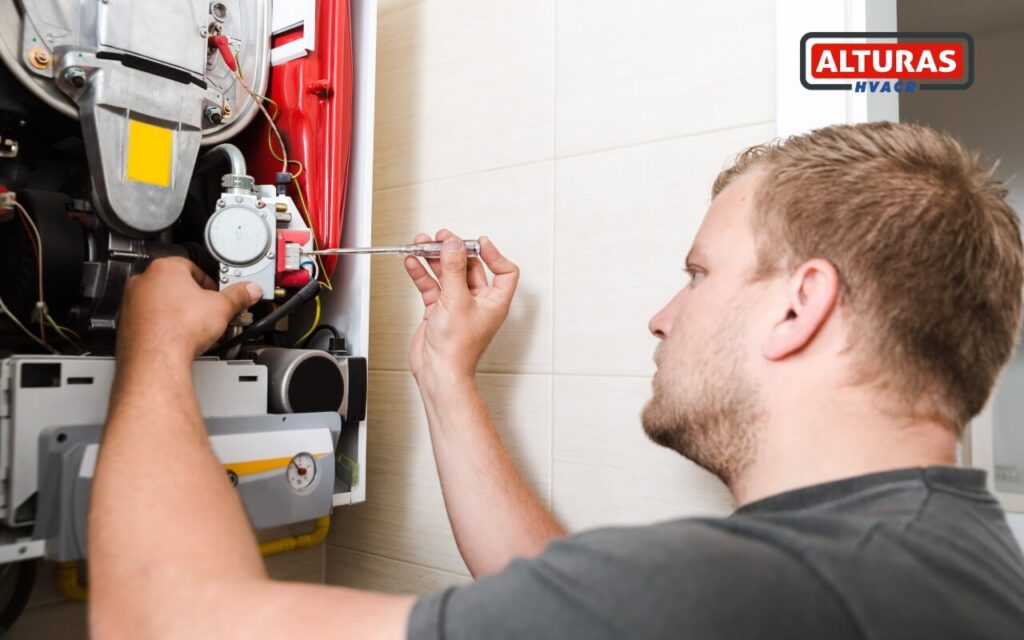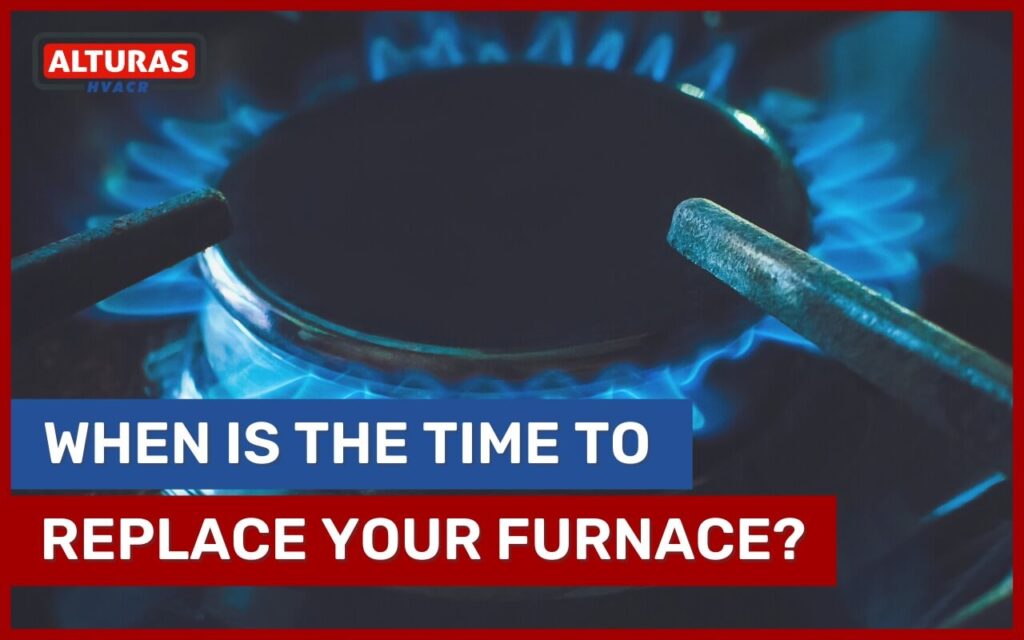You must consider it very important to properly pay attention to your furnace so that you can know when it is the right time to replace it. It would always be worthy to pay particularly close attention after your furnace has surpassed its anticipated lifespan since that means it is likely that you will need to replace it sooner rather than later.
Is it time to replace your Furnace?
Here are some of the ways by which you can tell when is it time to replace your furnace.
Your furnace is making different noises
In case you notice that your furnace is all of a sudden making weird and unusual noises, that is the time that you need to pay close attention. Some of the noises that are popping, rattling, humming, clicking or any other than usual could be a sign that your furnace is no longer working as it must do.
Your energy bill has increased
You will know when the furnace is nearly at the end of its life when it does not heat your home anymore as efficiently as it must and as it has always done. So as a result, it takes a lot more energy than usual so therefore, much more money as well in order to heat your entire home.
Your home is being heated unevenly
In case you ever notice that some of the areas at your home are colder as compared to others which means that your furnace is not heating your home evenly, it also could be a sign that it is now the time to replace and get it changed.
You are experiencing poor air quality:
If you find out that toward the end of your furnace’s life, the air quality in your home has not improved instead it has gotten worsened, and there is much more dust and many other particles that are being distributed through your home alert yourself that this is the time that you replace it as soon as possible.
You’re having to make frequent repairs:
In case your furnace has is demanding quite a few repairs lately and it has already been more than 15 years with this furnace, then it may be time that you replace it. Extending the life of your furnace past its useful life may do more harm than good.
Furnace replacement cost

Installing a furnace may cost you between $2,796 and $6,745 with an average cost of $4,644 that includes materials, equipment as well as labor. In case you replace a gas furnace runs from $3,800 to $10,000 or more for high-efficiency models in complex installations. All those electric models run slightly less at $2,000 to $7,000. Labor can cost you around $500 to $2,000 of the total project budget. Whereas a new furnace replacement can cost depending on the size of your home, the effectiveness of your new furnace, and the sophistication of the equipment.
The range may change for smaller homes all the way up to homes that are 5,000 square feet. This would also include single-stage, two-stage, and variable-speed furnaces, as well as each of those types in both standard and high-efficiency models. Your entire home’s size and the choice that you make in regard to your comfort will affect the final pricing within that range
You must always consult an HVAC professional. Usually, the quotes are almost always free and help identify your heating needs. Your HVAC pro will look at the size, configuration, and age of your house to determine the most cost-effective way to heat it. Your location, livable square footage, and energy bills all factor into which furnace type, model, and size are right for your home.
The average life of the Furnace and Air conditioner
Well, you might never be able to find any fixed answer to this question. It would not be possible to give the exact amount of time because you may find that there are so many factors that are involved in this regard. While we can not let you know exactly how long a furnace would last, still we can certainly provide you with some facts on average furnace lifespan, all the factors that would affect furnace life expectancy, furnace replacement signs, and some ways in which you can delay the lifespan of your furnace.
Read on to find out how long a furnace lasts.
Average Furnace Lifespan
While there are some mixed opinions about furnace life expectancy. Even though some furnaces can last you more than 40 years which is extremely rare, the estimated average life of a furnace is around 15 to 30 years. As long as you have scheduled annual furnace maintenance, it should easily last over 15 years. Same as your car, your older furnace might need some basic repairs. That does not matter if the furnace is out of warranty, some people would always prefer to buy a new model even before a minor repair is required. And some might be willing to make a number of repairs before letting go of the old furnace.
Factors That Affect Furnace Life Expectancy
There are some of the factors that affect gas furnace lifespan:
- Improper furnace sizing:
An incorrectly sized furnace installed within a heating and air conditioning system would definitely affect the comfort and energy efficiency of your home. Also, it may also reduce the lifespan of your furnace.
- Shoddy installation:
How long would your furnace usually last only depends on how it is installed in the first place. All those poorly designed, sized, and sealed ductwork can restrict airflow can cause problems with furnace performance and dependability. Incorrectly installed venting and fuel lines can also affect performance and reduce furnace lifespan.
- Lack of regular maintenance:
Regular maintenance can also help you in order to extend the performance and improve the lifespan of your furnaces. It is also recommended for you to hire certified home heating experts for regular cleaning and checkup. They can properly fix minor repairs to improve performance and avoid bigger issues that may occur later.
- Extreme thermostat settings:
If you set your thermostat too high or low, it would also possibly damage any of the components that may either shorten the life of the furnace or it may lead to an inconvenient or expensive service call. It is recommended to set the thermostat between 60⁰ and 80⁰ Fahrenheit.
How to Extend Furnace Lifespan
The best way to extend your furnace’s lifespan is by regularly cleaning, maintenance, and service. Here is what you can do in order to make sure that the best performance and efficiency of your furnace while preventing any sort of premature failure:
- Always keep the filters, motors, and heat exchanger free from dirt, dust, and other garbage.
- Always try to check and clean your furnace air filter.
While replacing your furnace you must always consider including a heat pump with your new furnace rather than an air conditioner. This would always create a dual-fuel system and it would also reduce the workload of the furnace. Still, it is always advised from our side to hire a qualified HVAC expert for regularly checking and cleaning your furnace.
Should I replace my furnace before it dies?

The ideal situation would be that you do not have to wait until your furnace dies itself entirely in order to replace it. This scenario can easily happen in the middle of the winter season, and it would only leave you with no heat at all at your entire home. Rather you must keep a close eye on your furnace’s operation, in both efficiency and cost terms.
Some of the warning signs listed above might only suggest that repair or maintenance is required now. Nevertheless, as they start to add up near the end of the appliance’s lifetime, they can be the warning signs that it is time to replace the furnace completely. A proper and certified HVAC professional will be able to tell you if a replacement is necessary, and you can always get a second opinion from another contractor so that you can ease your mind.
How long does a furnace last?
As we know a furnace is one of the most important features of your entire home, so knowing about furnace life expectancy would be crucial for all homeowners. Well as we said how long a furnace would last depends on a lot of factors which may also include the furnace’s unique features when it was manufactured, and how well it’s been looked after. For some people that are living in an older home, the furnace is likely at the end of its lifespan if it has not been replaced within the last few years. The proper knowledge of how to spot poor installation or neglectful maintenance can give homeowners a good idea if their furnace has time left—or if it’s time to replace it.
The two most common types of furnaces are gas furnaces and electric furnaces. A furnace’s longevity also depends on the type of furnace you own.
- A gas furnace on average lasts between 15 and 20 years.
- An electric furnace lasts between 20 and 30 years.
Electric furnaces usually last longer than gas furnace models because of their design that is much simpler. No combustion would take place, and electric heating technology is pretty simple. Electric furnace installation is often cheaper to install than their gas counterparts, but their drawback is they can cost more to operate, which eliminates the savings.

